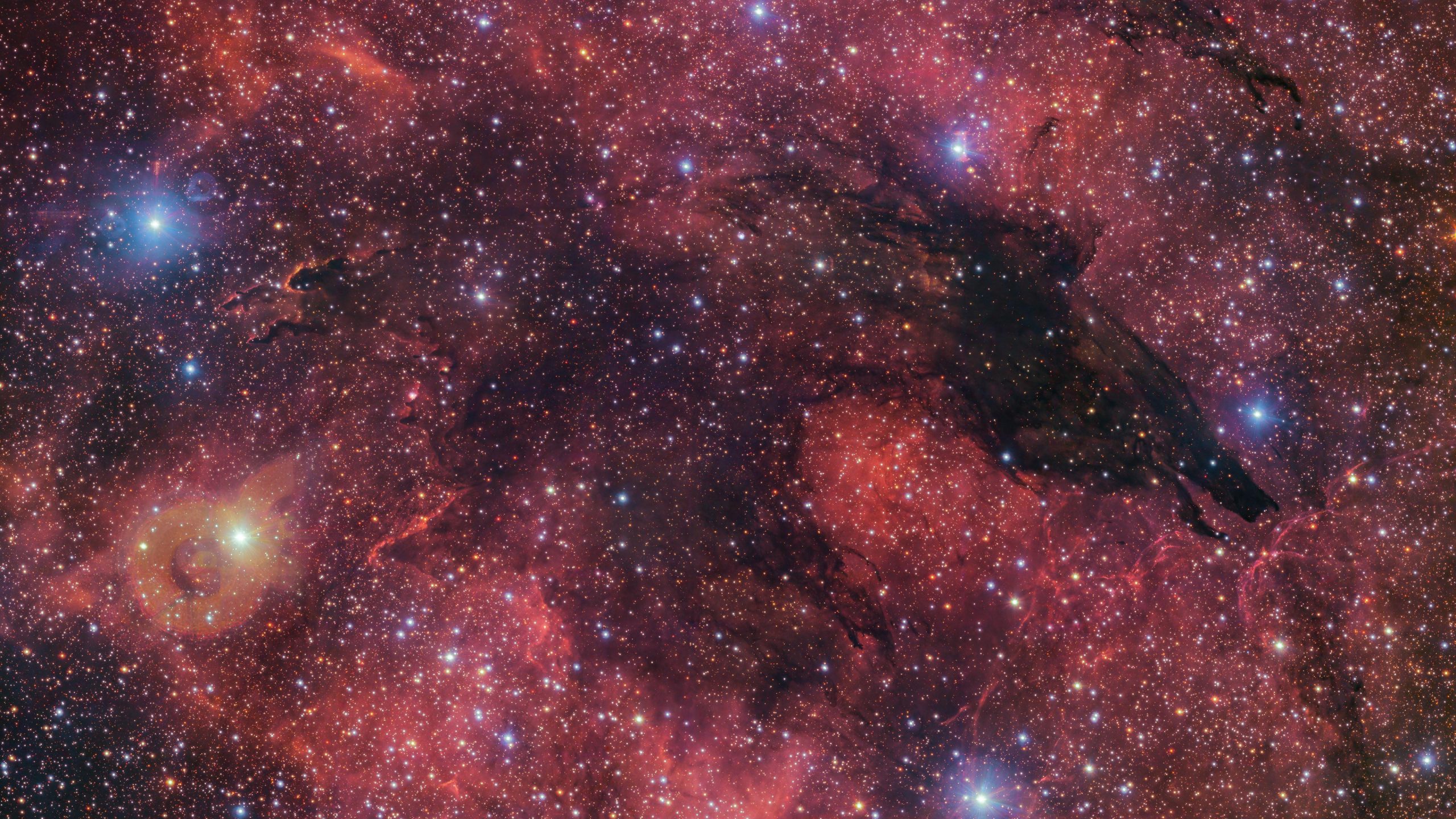
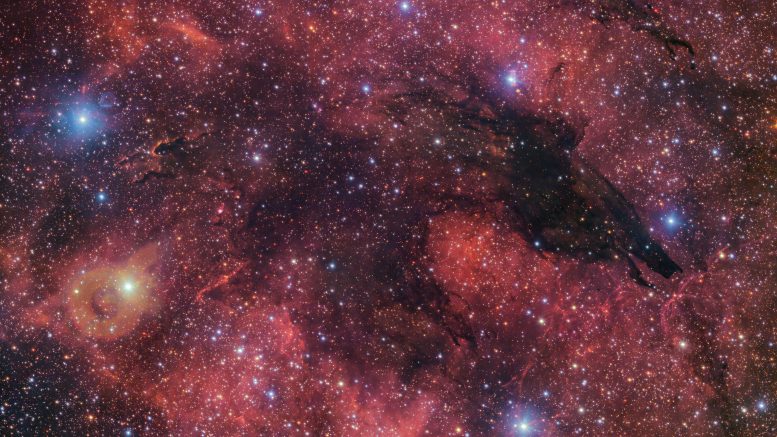
The European Southern Observatory captured a Halloween-themed image of the Dark Wolf Nebula, a hauntingly dense cloud of cosmic dust in the constellation Scorpius.
This dark nebula, located 5300 light-years from Earth, appears against a vibrant backdrop, resembling a wolf lurking in the stars. Unlike other nebulae, dark nebulae absorb light, allowing only infrared radiation to pass through.
The Dark Wolf Nebula
Halloween may be over, but this haunting new image released by the European Southern Observatory (ESO) should not be missed. It features a dark nebula that resembles a wolf’s silhouette against a vibrant cosmic background. Appropriately named the Dark Wolf Nebula, this striking image was captured in a detailed 283-million-pixel shot by the VLT Survey Telescope (VST) at ESO’s Paranal Observatory in Chile.
The Dark Wolf Nebula lies in the constellation Scorpius, near the center of the Milky Way, about 5,300 light-years from Earth. This image covers an area of the sky about the size of four full Moons, yet it represents only a portion of the larger Gum 55 nebula. Looking closely, the nebula’s wolf-like shape even hints at a werewolf, its hands eerily reaching out as if ready to grab any lingering stargazers.
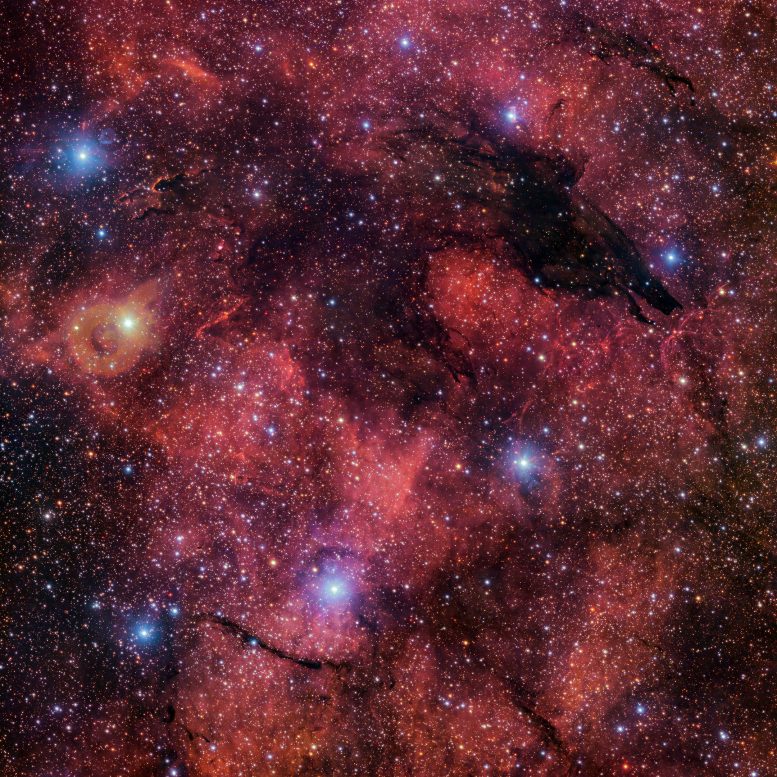
What Are Dark Nebulae?
If you thought that darkness equals emptiness, think again. Dark nebulae are cold clouds of cosmic dust, so dense that they obscure the light of stars and other objects behind them. As their name suggests, they do not emit visible light, unlike other nebulae. Dust grains within them absorb visible light and only let through radiation at longer wavelengths, like infrared light. Astronomers study these clouds of frozen dust because they often contain new stars in the making.
Of course, tracing the wolf’s ghost-like presence in the sky is only possible because it contrasts with a bright background. This image shows in spectacular detail how the dark wolf stands out against the glowing star-forming clouds behind it. The colorful clouds are built up mostly of hydrogen gas and glow in reddish tones excited by the intense UV radiation from the newborn stars within them.
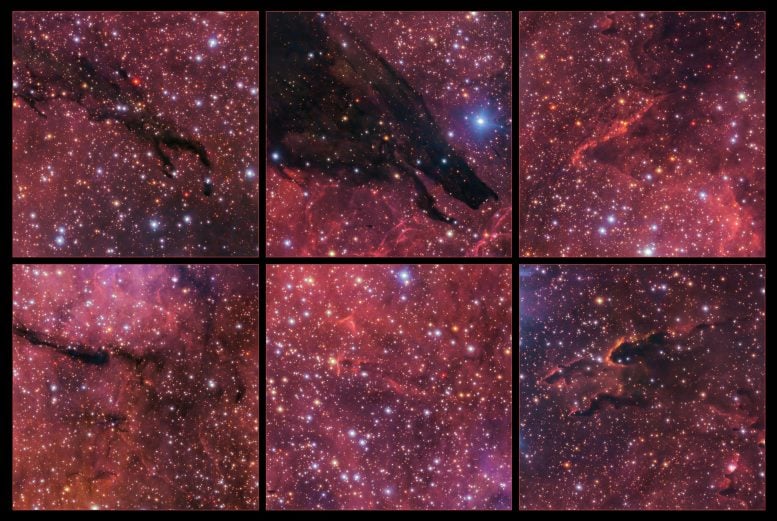
Observing Dark Nebulae and Their Significance
Some dark nebulae, like the Coalsack Nebula, can be seen with the naked eye – and play a key role in how First Nations interpret the sky[1] – but not the Dark Wolf. This image was created using data from the VLT Survey Telescope, which is owned by the National Institute for Astrophysics in Italy (INAF) and is hosted at ESO’s Paranal Observatory, in Chile’s Atacama Desert. The telescope is equipped with a specially designed camera to map the southern sky in visible light.
The picture was compiled from images taken at different times, each one with a filter letting in a different color of light. They were all captured during the VST Photometric Hα Survey of the Southern Galactic Plane and Bulge (VPHAS+), which has studied some 500 million objects in our Milky Way. Surveys like this help scientists to better understand the life cycle of stars within our home galaxy, and the obtained data are made publicly available through the ESO science portal. Explore this treasure trove of data yourself: who knows what other eerie shapes you will uncover in the dark?
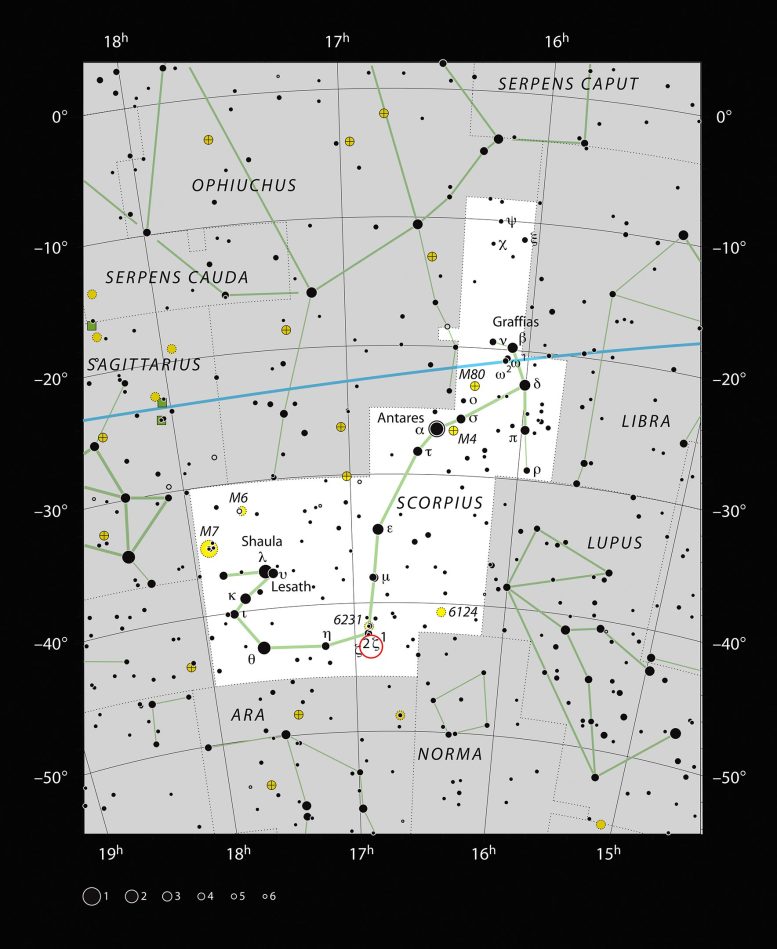
Notes
- The Mapuche people of south-central Chile refer to the Coalsack Nebula as ‘pozoko’ (water well), and the Incas called it ‘yutu’ (a partridge-like bird).